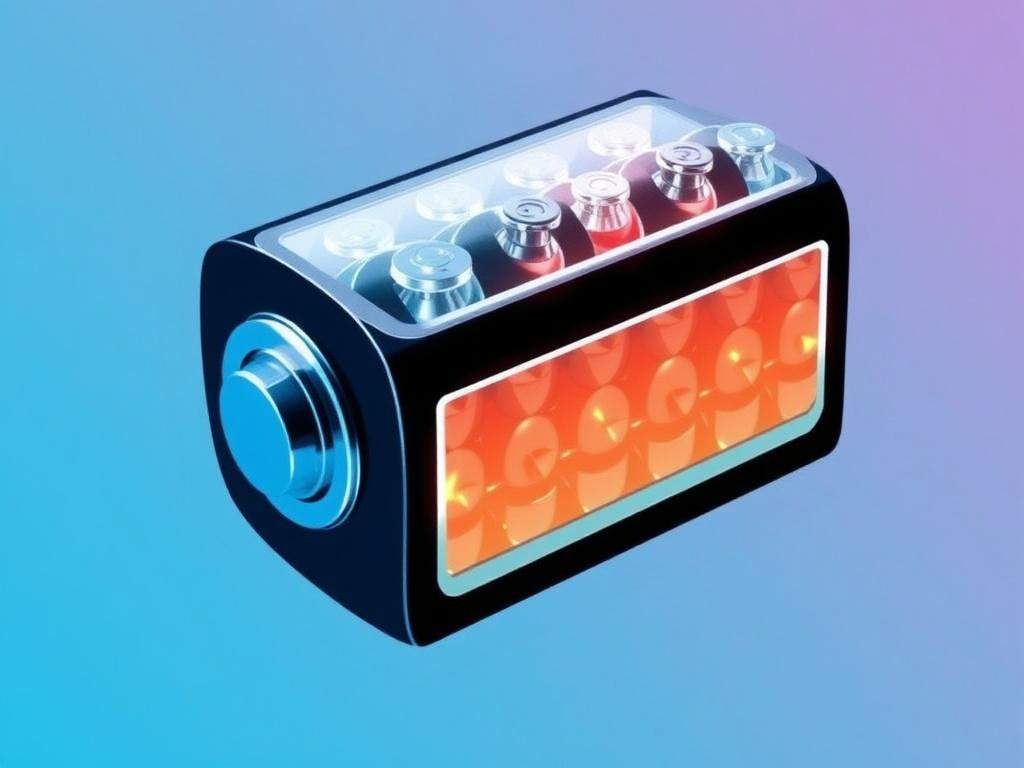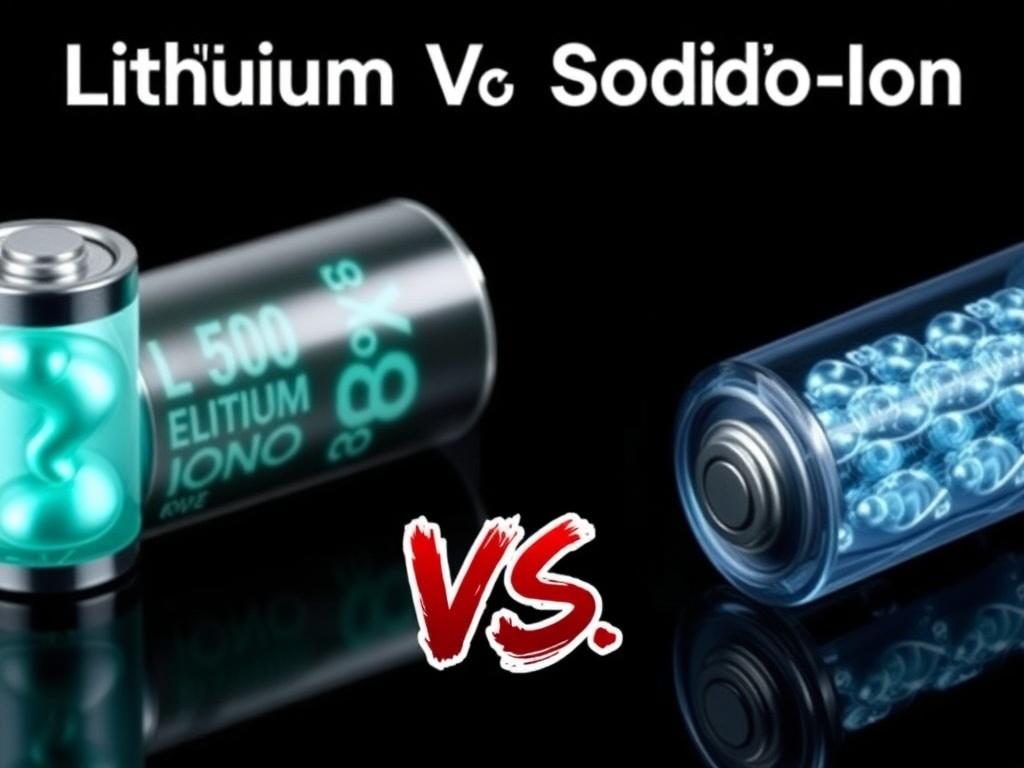- The Rise of Lithium-Ion Batteries: A Proven Powerhouse
- Key Advantages of Lithium-Ion Batteries
- Sodium-Ion Batteries: The Emerging Challenger
- Unique Strengths of Sodium-Ion Batteries
- Comparing Lithium and Sodium-Ion Batteries: Performance Metrics
- Applications Driving Demand for Both Battery Types
- Electric Vehicles
- Grid Energy Storage
- Consumer Electronics
- Off-Grid and Remote Energy Solutions
- Challenges Facing Lithium and Sodium-Ion Technologies
- Challenges for Lithium-Ion Batteries
- Challenges for Sodium-Ion Batteries
- Future Trends and Innovations: Bridging the Gap
- Advances in Lithium-Ion Technology
- Breakthroughs in Sodium-Ion Battery Development
- Hybrid Approaches and Alternative Chemistries
- Market Outlook: Who Will Lead the Battery Revolution?
- Conclusion
In the rapidly evolving world of energy storage, batteries play a starring role in driving everything from electric cars to renewable energy grids. When it comes to choosing the best battery technology for the future, two contenders stand out: lithium-ion and sodium-ion batteries. Each has its own unique advantages and challenges, making the debate about which will dominate both fascinating and complex. This article dives deep into the fundamental differences, benefits, challenges, and potential market impacts of lithium-ion and sodium-ion batteries. Whether you’re an energy enthusiast, a tech investor, or just curious about what powers our gadgets and vehicles, get ready for an engaging exploration of these two cutting-edge technologies.
The Rise of Lithium-Ion Batteries: A Proven Powerhouse
For over two decades, lithium-ion batteries have been the undisputed champs of energy storage. They power everything from smartphones and laptops to electric vehicles (EVs) and grid-level energy storage systems. The impressive energy density, long cycle life, and relatively light weight make lithium-ion batteries incredibly versatile. Their widespread adoption has dramatically accelerated the shift towards electrification in transportation and renewable energy sectors.
At the heart of lithium-ion technology lies the lithium element’s small atomic size and light weight. These traits allow lithium ions to move quickly and efficiently back and forth between the battery’s anode and cathode during charging and discharging. This results in high voltage, excellent energy density, and good overall performance. The most common lithium-ion chemistries include lithium cobalt oxide (LCO), lithium iron phosphate (LFP), and nickel manganese cobalt oxide (NMC). Each chemistry offers a unique balance of energy density, cost, safety, and cycle life.
However, lithium-ion batteries are not without their problems. The rising global demand for lithium and cobalt, both key materials in most lithium-ion chemistries, has sparked supply chain concerns and price volatility. Moreover, the environmental impact of lithium mining and battery disposal poses challenges for sustainable growth. Safety risks related to thermal runaway and battery fires remain an ongoing concern despite advances in battery management systems.
Key Advantages of Lithium-Ion Batteries
- High energy density: Lithium-ion batteries deliver superior energy per unit weight, making them ideal for portable and mobile applications.
- Long cycle life: Advanced lithium-ion batteries can endure thousands of charging cycles while maintaining capacity.
- Low self-discharge rate: Lithium-ion batteries hold charge well over time when not in use.
- Established manufacturing infrastructure: The global industry has mature supply chains and production capabilities.
- Wide variety of chemistries: Enables tailoring battery performance to specific applications and price points.
Sodium-Ion Batteries: The Emerging Challenger
Sodium-ion batteries, although less well-known than their lithium counterparts, have been gathering momentum as a promising alternative technology. Sodium, being abundant and inexpensive, addresses some of lithium-ion’s core challenges: material cost and supply risk. This makes sodium-ion batteries particularly attractive for large-scale energy storage where cost per kilowatt-hour is a critical factor.
Technically, sodium-ion batteries operate on a similar principle to lithium-ion, swapping lithium ions for sodium ions during charge and discharge. But sodium’s larger atomic size and different electrochemical properties affect battery design and performance. Historically, sodium-ion batteries lagged behind in energy density and cycle life, but recent breakthroughs in materials science and engineering have significantly closed the gap.
Leading research institutions and several pioneering companies worldwide are now racing to commercialize sodium-ion batteries for grid storage, electric vehicles, and consumer electronics. If the technology continues to improve, sodium-ion batteries could disrupt markets traditionally dominated by lithium-ion.
Unique Strengths of Sodium-Ion Batteries
- Abundant raw materials: Sodium is widely available, reducing dependency on scarce minerals.
- Lower cost: Reduced material costs translate to potentially cheaper battery packs.
- Environmental benefits: Sodium mining and processing typically have a smaller ecological footprint.
- Safety advantages: Sodium-ion batteries may exhibit better thermal stability and lower fire risk.
- Good performance at low temperatures: Sodium-ion cells can operate effectively in cold climates.
Comparing Lithium and Sodium-Ion Batteries: Performance Metrics
To get a clearer picture of how these battery types stack up, let’s break down some key performance metrics.
| Attribute | Lithium-Ion Batteries | Sodium-Ion Batteries |
|---|---|---|
| Energy Density (Wh/kg) | 150 — 250 | 90 — 160 |
| Cycle Life (Charge/Discharge cycles) | 1000 — 3000+ | 1000 — 2500 |
| Cost per kWh | High to moderate (varies with material prices) | Lower (due to abundant materials) |
| Operating Temperature Range | -20°C to 60°C | -30°C to 60°C (better in cold) |
| Raw Material Availability | Limited and regionally concentrated | Abundant and globally distributed |
| Environmental Impact | Higher (mining and disposal concerns) | Lower (more eco-friendly extraction and recycling) |
From this comparison, it’s clear that lithium-ion batteries currently have the edge in energy density and overall maturity. However, sodium-ion batteries offer compelling advantages in cost, raw material availability, and environmental impact. These trade-offs are at the heart of the ongoing debate about their future roles.
Applications Driving Demand for Both Battery Types
The demand landscape for batteries continues to evolve rapidly, driven by diverse applications with varying performance requirements. Understanding where lithium-ion and sodium-ion batteries fit helps shed light on their future prospects.
Electric Vehicles
Electric vehicles remain the flagship application for lithium-ion batteries due to their need for high energy density and long ranges. The lighter weight and compact size of lithium-ion packs enable efficient cars with longer mileage per charge. Nonetheless, sodium-ion’s cost and safety benefits could make it attractive for lower-cost or short-range EV models, especially as technology improves.
Grid Energy Storage
Grid-scale energy storage is critical for integrating renewable energy like solar and wind into power grids. Here, cost, durability, and safety are paramount. Sodium-ion batteries, with lower costs and safer chemistries, have strong potential to compete and even overtake lithium-ion batteries in large stationary storage.
Consumer Electronics
High-performance gadgets like smartphones and laptops currently rely on lithium-ion batteries because of their compact size and high energy density. Sodium-ion batteries have not yet reached the miniaturization or energy density levels needed but may find niche uses in cost-sensitive electronics or backup power.
Off-Grid and Remote Energy Solutions
Sodium-ion batteries’ ability to tolerate low temperatures and cheaper cost profile make them promising candidates for off-grid solar systems in rural or cold regions where reliability and affordability are critical.
Challenges Facing Lithium and Sodium-Ion Technologies

Both lithium-ion and sodium-ion batteries face hurdles before widespread adoption and dominance in the market.
Challenges for Lithium-Ion Batteries
- Resource Scarcity: Lithium and cobalt resources are limited and concentrated in a few countries, risking supply bottlenecks.
- Rising Costs: Increasing demand and geopolitical factors contribute to price volatility.
- Environmental Concerns: Mining processes have significant ecological and social impacts.
- Safety Risks: Thermal runaway incidents, while rare, raise public and regulatory concerns.
- Recycling Issues: Limited infrastructure for efficient recycling affects sustainability.
Challenges for Sodium-Ion Batteries
- Technical Maturity: Sodium-ion batteries are less proven, requiring further R&D to improve longevity and energy density.
- Energy Density Gap: Although improving, sodium-ion still lags behind lithium-ion.
- Manufacturing Scale: Production processes need scaling to compete on cost and volume.
- Market Adoption: Strong incumbent lithium-ion industry makes penetration challenging.
- Material Stability: Finding optimal electrolyte and anode materials remains an active research area.
Future Trends and Innovations: Bridging the Gap

The race between lithium and sodium-ion batteries will likely be influenced heavily by ongoing innovations in materials science, manufacturing techniques, and recycling technologies.
Advances in Lithium-Ion Technology
Research is pushing lithium-ion batteries towards higher energy densities, faster charging, and improved safety. Novel solid-state electrolytes promise safer batteries with even higher performance. Meanwhile, efforts to reduce or replace cobalt with cheaper and more abundant elements aim to ease cost and supply concerns.
Breakthroughs in Sodium-Ion Battery Development
Recent discoveries in anode materials, such as hard carbon and novel phosphorus-based compounds, have dramatically improved sodium-ion battery capacity and stability. New electrolyte formulations increase efficiency and lifespan. Additionally, pilot-scale manufacturing facilities are starting to demonstrate the commercial viability of sodium-ion batteries.
Hybrid Approaches and Alternative Chemistries
There is growing interest in hybrid battery systems that combine lithium and sodium ions or integrate lithium-ion with other chemistries such as potassium-ion or solid-state batteries. These approaches could optimize performance, cost, and sustainability in future energy storage solutions.
Market Outlook: Who Will Lead the Battery Revolution?
Looking ahead over the next decade, several factors will shape the dominant battery technology:
| Factor | Lithium-Ion Outlook | Sodium-Ion Outlook |
|---|---|---|
| Cost Trajectory | Moderate decline as supply chain optimizes and new chemistries reduce expensive materials. | Rapid decline possible due to cheap raw materials and scaling. |
| Supply Risk | Ongoing concerns about lithium and cobalt availability. | Low, with abundant, widely distributed sodium supplies. |
| Application Focus | High-performance EVs, portable electronics, and premium grid storage segments. | Mass-market grid storage, budget EVs, and low-cost electronics. |
| Environmental Impact | Pressure to improve sustainability and recycling. | Expected to have a significantly smaller footprint. |
| Technological Innovation | Strong momentum with aggressive industry investment. | Growing investment and breakthroughs could close gap further. |
Ultimately, rather than a single winner, it seems likely that lithium and sodium-ion batteries will coexist, each dominating specific niches based on their strengths. The future energy ecosystem may well rely on a diverse battery portfolio to meet the complex needs of transportation, grid stability, and portable power.
Conclusion

The debate over lithium versus sodium-ion batteries is not just about technology but also about economics, sustainability, and strategic resource management. Lithium-ion batteries, with their proven high performance and established markets, are poised to remain the dominant force for high-end applications such as electric vehicles and premium electronics for the foreseeable future. However, sodium-ion batteries are rapidly closing the performance gap while offering significant advantages in cost, material abundance, and environmental impact. These attributes make sodium-ion an increasingly attractive option for large-scale energy storage and budget-sensitive markets. As ongoing research and commercial scaling continue to advance both technologies, the future will likely see a complementary relationship rather than outright competition. Together, lithium and sodium-ion batteries could power a cleaner, more resilient, and affordable energy future. For consumers, industries, and policymakers alike, understanding the nuanced strengths and challenges of each battery type is key to making informed decisions and fostering innovation in the global energy transition.
Как вам статья?







